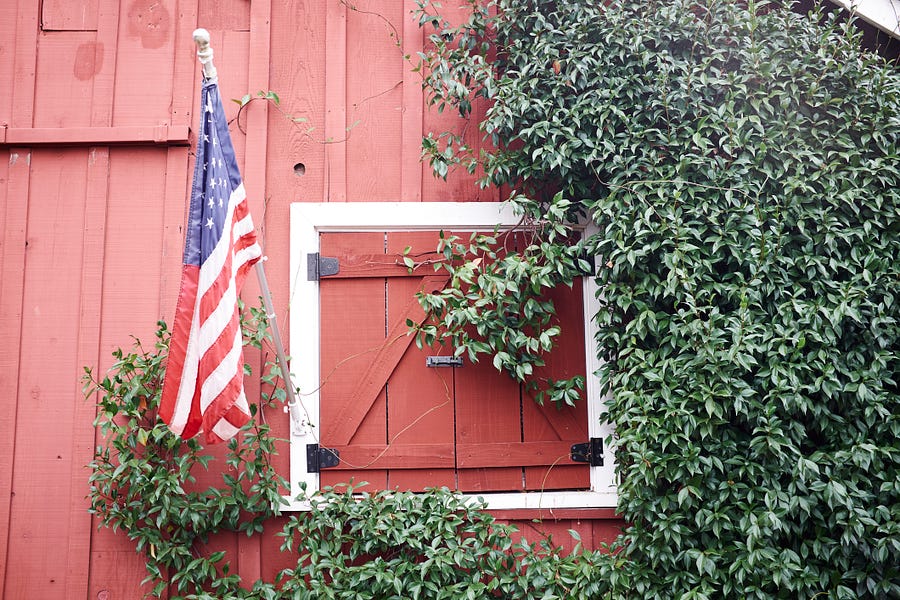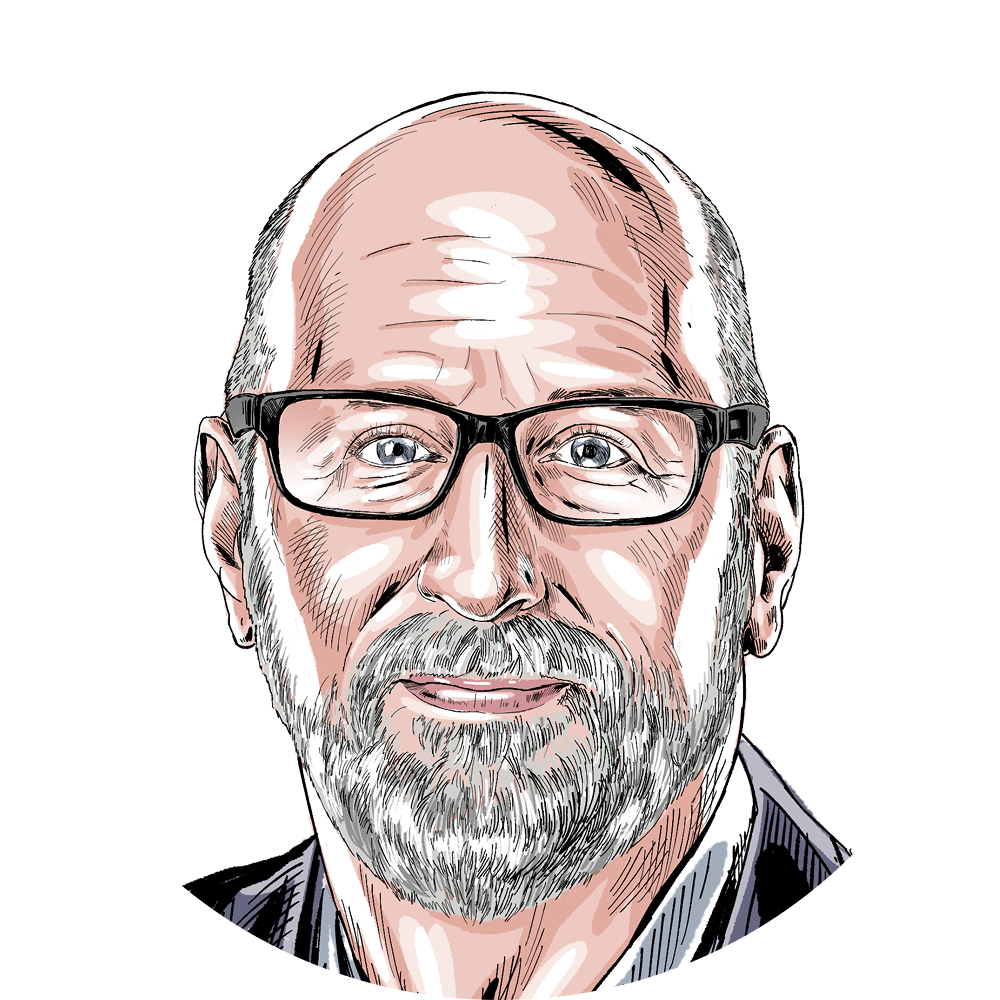I think I released my book about 18 months too early. I was talking about dangerous American divisions well before it was cool. In the last 10 days we’ve seen two stories go wildly viral, one in The Atlantic and the other in the New York Times, making the rather emphatic case that the United States is splitting in two. Red America and Blue America aren’t just divided, they’re separating politically and culturally into two different nations.
Writing in The Atlantic, Ronald Brownstein highlighted a provocative thesis by Michael Podhorzer, a union strategist and chair of the Analyst Institute:
“When we think about the United States, we make the essential error of imagining it as a single nation, a marbled mix of Red and Blue people,” Podhorzer writes. “But in truth, we have never been one nation. We are more like a federated republic of two nations: Blue Nation and Red Nation. This is not a metaphor; it is a geographic and historical reality.”
Brownstein wrote before the Dobbs decision. Jonathan Weisman wrote in the NYT after Dobbs, and his diagnosis was also dramatic:
Pressed by Supreme Court decisions diminishing rights that liberals hold dear and expanding those cherished by conservatives, the United States appears to be drifting apart into separate nations, with diametrically opposed social, environmental and health policies.
Call these the Disunited States.
Loyal readers might remember my book, Divided We Fall, that was released all the way back in the height of the pandemic in 2020. Here was my opening paragraph:
It’s time for Americans to wake up to a fundamental reality: the continued unity of the United States of America cannot be guaranteed. At this moment in history, there is not a single important cultural, religious, political, or social force that is pulling Americans together more than it is pushing us apart. We cannot assume that a continent-sized, multi-ethnic, multi-faith democracy can remain united forever, and it will not remain united if our political class will not adapt to an increasingly diverse and divided American public.
At the time I was nervous about my thesis. I could see the trends tearing us apart, yet I worried that I was too dire. Are we really that divided? Do partisans hate each other that much? I intended my book as a warning. We can’t keep doing what we’re doing without facing severe consequences.
Now it feels like a prophecy. The dire consequences feel more possible than ever. For example, my book came out in September 2020. I did not foresee that less than four months later, we were one vice presidential decision away from the worst constitutional crisis since 1861. I did not see political violence escalating to the point where angry activists on the far right and far left are rendering public service more perilous and frightening with each passing month.
Nor did I necessarily foresee the atmosphere of gloom that pervades this land. A recent Gallup survey puts American patriotism at a new low. Only 38 percent are “extremely proud” to be an American, with Democrats at 26 percent, independents at 34 percent, and Republicans at 58 percent.
But if Republicans are most proud of their American identity, they’re least optimistic about the future. Last month More in Common released a study showing that 50 percent of Republicans believe America’s best days are “definitely” or “probably” behind us. Democrats and independents were at 32 and 33 percent.
These findings are consistent with my personal experience. Democrats often seem to dwell on the worst elements of the American past (hence their lack of pride) but seem to have a greater degree of hope for positive social change. Republicans remember America at its best yet see the culture in a state of persistent decline.
At the risk of overgeneralizing, a Democrat might say that what’s bad is getting better. A Republican would respond that what’s good is getting worse.
But I’m growing increasingly wary of the binary analysis of American life. The more I travel this country post-pandemic, the more I encounter the third faction—the “exhausted majority” first identified by More in Common’s “Hidden Tribes” survey all the way back in 2018. Under this analysis, America isn’t just red and blue. It’s red and blue and just plain tired.
Who are these tired Americans? The polling answer from the survey is the two-thirds of our neighbors and citizens (from across the political spectrum) who are fed up with polarization, forgotten in public discourse, flexible in their views, and still believe we can find common ground.
The personal answer comes from the people I talk to every day. There’s the staunch Republican doctor who turned off Fox News and deleted his social media the day after January 6 and hasn’t plugged in since. There’s the moderate Democrat who tried to resist an extremist takeover of a local school board and was forced to retreat in the face of a hurricane of online hate.
It’s the son or daughter who stopped talking politics to stay on speaking terms with mom or dad. It’s the mom or dad who can’t understand a radicalized child.
The exhausted American is in my email inbox, writing personal, anguished letters about lost relationships. The radicalized American is in my Twitter feed, furious at any deviation from the party line. The radicalized American is capturing institutions, making life miserable for dissenters left or right. The exhausted American doesn’t know where to go. Who speaks for them?
The exhausted American does not make a religion out of politics, and is thus at a disadvantage when confronting the ferocity and zeal of the true political believer.
The exhausted American is hungry for simple decency, and will seek out friendships on the left and the right, so long as respect trumps differences. Even the most extreme disagreements are manageable so long as a friend is willing to listen and learn, and you’re willing to listen and learn in return.
The exhausted majority is also the hope for America.
Make no mistake, the answer is not found in the polarized wings. Each side has too much animosity to reach any kind of accommodation and too little power to achieve any kind of permanent triumph. In my book, I posited that federalism could be an answer to our political divide, but partisan animosity has grown so great that state governments are wielding local power in the service of national fights.
State legislation has become both performative and punitive, with a focus on rewarding friends and punishing enemies. California, for example, currently bans state-funded and state-sponsored travel to 20 American states, a form of economic sanction designed to punish states that California deems insufficiently protective of LGBT rights. Florida has enacted a broad range of laws that purport to crack down on “wokeness” and punish expression with which the state disagrees.
But what happens when the exhausted majority gets just a little bit energetic? It can check the excesses of left and right. In San Francisco an exhausted progressive majority recalled radical school board members and a radical district attorney. In the Southern Baptist Convention, an exhausted conservative majority has now twice turned back a politically radicalized and vocal fundamentalist wing that would transform the SBC into a MAGA denomination.
I know and have met people who both organized and voted for the San Francisco recall. I know and have met people who resisted the fundamentalist takeover of the SBC. And the two groups share something important in common. While they’re both political in the sense that they have political values, politics is ultimately less important to their day-to-day lives than it is to their most motivated opponents.
Invariably this means that the exhausted majority’s political engagement is more occasional or episodic than it is constant or relentless. The polarized wings never rest. The exhausted majority stirs itself when the situation is dire, exerts its will, and then returns to its true passions—whether that’s family, work, or faith.
There was a time when I lived my life on the polarized wings. I spent more time worried about “the left” than I spent thinking through what part my partisanship played in fraying the American social fabric. I saw the triumph of my political foes as a greater threat to the nation than the partisan conflict itself.
I now hold a different view, one that’s closer to the view of America’s wisest founders at their most prescient moments. George Washington, in his farewell address, warned his countrymen against the dangers of factionalism and regionalism. James Madison, in Federalist 10, warned against the “violence of faction.”
Abraham Lincoln, the indispensable architect of America’s second founding, told the Young Men’s Lyceum of Springfield, Illinois, “At what point then is the approach of danger to be expected? I answer, if it ever reach us, it must spring up amongst us. It cannot come from abroad. If destruction be our lot, we must ourselves be its author and finisher. As a nation of freemen, we must live through all time, or die by suicide.”
I’m concerned about our national union. I’m more concerned than I was when I wrote my book warning about the possibility of secession. But I also know that the solution to our challenge is hiding in plain sight. It’s the great bulk of the American people—the fed up, forgotten, flexible Americans who span the ideological spectrum yet don’t completely identify as red or blue.
This July Fourth, I’m both proud to be an American and convinced that our best days can still lie ahead of us. But not if we’re too tired to engage. The exhausted majority has to get energetic, even if only for a time, to rescue America from the friends, families, and neighbors who are tearing it apart.
One more thing …
I’ve got exhaustion on my mind because I’m encountering more exhausted and overwhelmed Americans every day. This week’s Good Faith podcast directly addresses overwhelmed Americans through a spiritual lens. Can we actually view anxiety as a spiritual opportunity? Indeed we can. Listen to the whole thing to hear my co-host Curtis at his pastoral best.
One last thing …
I’m not ending with a Christian song but rather with a song about America that grows on me year-by-year, especially as our ties that bind continue to fray. I love how Bruce Springsteen sings it, and it has echoes with George Washington’s famous biblically -inspired hope for the new nation he led: “but they shall all sit under their own vines and under their own fig trees, and no one shall make them afraid.”







Please note that we at The Dispatch hold ourselves, our work, and our commenters to a higher standard than other places on the internet. We welcome comments that foster genuine debate or discussion—including comments critical of us or our work—but responses that include ad hominem attacks on fellow Dispatch members or are intended to stoke fear and anger may be moderated.
With your membership, you only have the ability to comment on The Morning Dispatch articles. Consider upgrading to join the conversation everywhere.